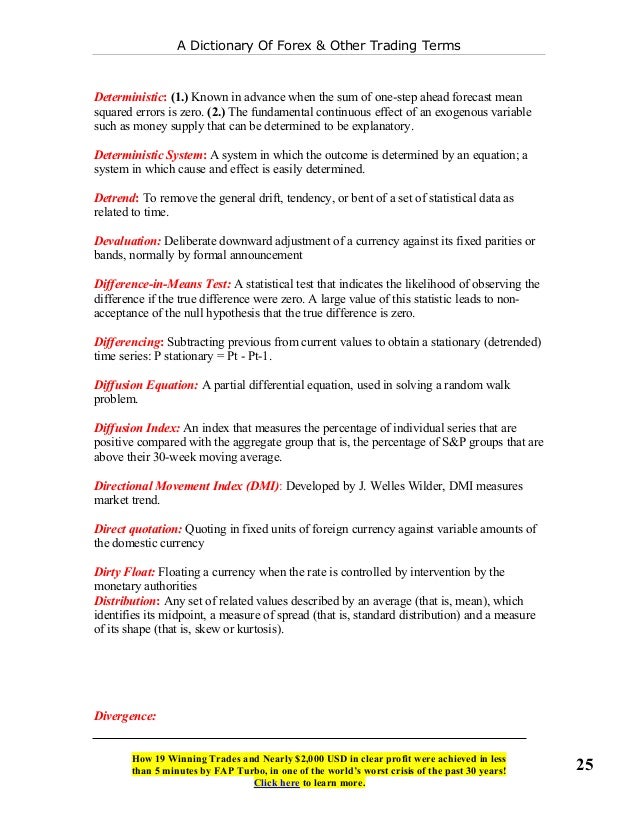Download Random Walk Trading Rares
May 24, 2014 The AJ-pro scam Animal Jam Wiki. I has 7 rares and 2 betas. Tecnotest Reflex Plus 4130 Crack. (but i do read picture books for fun at random times because sometimes I'm mentally.

WNW: I'm looking for the Random Walk Index for MT4. The original formula developed by Mike Poulos used 4 indicators- a short-term period of 1 to 8 bars of the highs and lows, and a long-term indicator of 8 to 64 bars of the highs and lows.

Any help appreciated, I do not have the knowhow for MT4 coding. Donnie Joe Emerson Dreamin Wild Rarity. Included is a link to a basic description of the indicator, but please be aware the formula for the long-term calculation at the bottom of the page is incorrect. Link; Thanks in advance, William Can U write all orginal (correct) formula? Or mabye U have a link to it? If so, i think I can help U with that indicator. Regards Kale.
Hi Kale, Thanks for responding. As noted in my first post, here's a link to the formula: but the code for the second part of the indicator is incorrect. The RWI is a 2-part indicator, and each part has a high RWI and a low RWI. The short RWI includes the high and low and uses 1 to 8 periods.
The long RWI includes the high and low and uses 8 to 64 periods. You'll see in the lower part of the link that the code does not reflect this. It's not a hard indicator to code, but it's very long.
Hare Kanch Ki Chudiyan Dd Metro Serial Song Download. I used to have the code for Metastock, but it's long gone. I looked all over the web for a MetaStock or Tradestation formula but haven't been able to find one.
Any help appreciated, thanks again. Random Walk Index This thread is pretty old and I'm not a coder but I was wondering if anyone would happen to have this indicator stashed away anywhere.
There is another thread out there started by raff1410 but the indicator is unfortunately not quite the standard indicator. Raff took the general concept and made a channel-type of system out of it. It is basically a dynamic ADX that registers inefficiencies in a fixed look-back period by using the average true range as a dyamic telltale for random vs.
Continuous (predictable) events. Description: There is a weak and a strong way to measure the random quality of a time series. The weak way is to use the random walk index (RWI).
You can download it from the Omega web site. It makes the assumption that the market is moving randomly with an average distance D per move and proposes an amount the market should have changed over N bars of time. If the market has traveled less, then the action is considered random, otherwise it's considered trending.
The problem with this method is that taking the average distance is valid for a Normal (Gaussian) distribution of price activity. However, price action is rarely Normal, with large price jumps occuring much more frequently than a Normal distribution would expect. Consequently, big jumps throw the RWI way off, producing invalid results. The strong way is to not make any assumption regarding the distribution of price changes and, instead, measure the fractal dimension of the time series. Fractal Dimension requires a lot of data to be accurate. If you are trading 30 minute bars, use a multi-chart where this indicator is running on 5 minute bars and you are trading on 30 minute bars.[/CODE].
Usage: The following table shows how to interpret the results. 2.0 -1.0 0.0 congestion 1.5 0.0 0.5 random walk 1.0 1.0 1.0 trend [CODE] Remember two important points: 1) Trend is STRONGER when the indicator is LOWER. If this is confusing, you can convert Fractal Dimension to a trend efficiency index (like Kaufmann's efficiency ratio) this way: Trend Efficiency = 2 - Fractal Dimension 2) Maxbarsback must be set greater than SIZE*COUNT Source: Our forum threads/posts: (indicators with explanation). Description: There is a weak and a strong way to measure the random quality of a time series.
The weak way is to use the random walk index (RWI). You can download it from the Omega web site. It makes the assumption that the market is moving randomly with an average distance D per move and proposes an amount the market should have changed over N bars of time. If the market has traveled less, then the action is considered random, otherwise it's considered trending. The problem with this method is that taking the average distance is valid for a Normal (Gaussian) distribution of price activity. However, price action is rarely Normal, with large price jumps occuring much more frequently than a Normal distribution would expect.
Consequently, big jumps throw the RWI way off, producing invalid results. The strong way is to not make any assumption regarding the distribution of price changes and, instead, measure the fractal dimension of the time series. Fractal Dimension requires a lot of data to be accurate. If you are trading 30 minute bars, use a multi-chart where this indicator is running on 5 minute bars and you are trading on 30 minute bars.[/CODE].